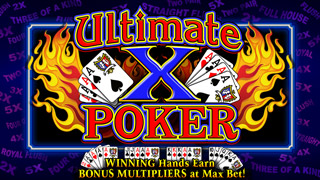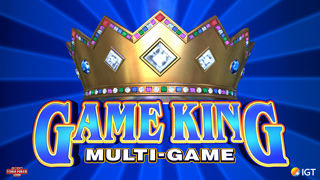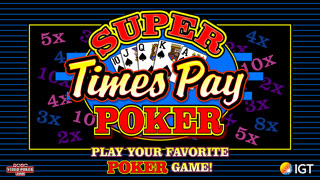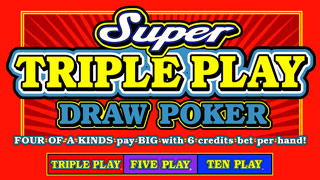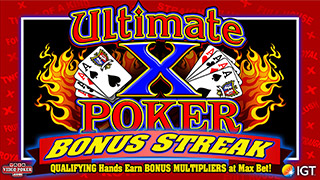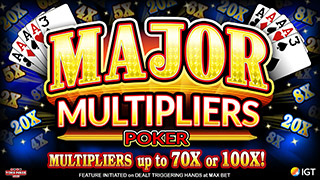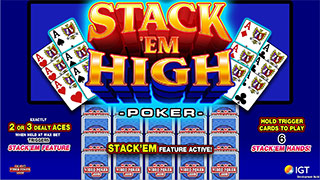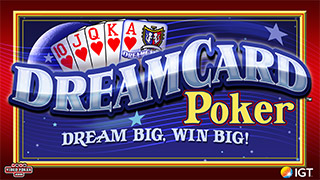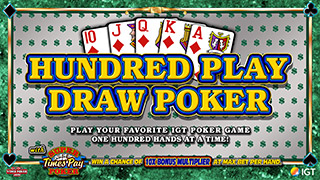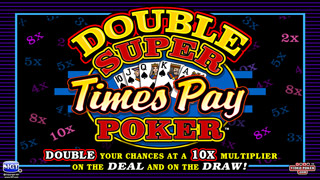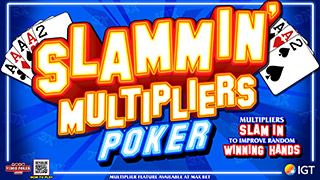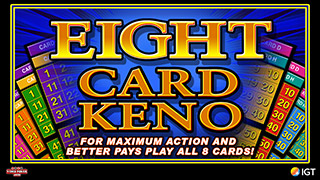What Would It Take???
-
shadowman
- Video Poker Master
- Posts: 3587
- Joined: Mon Oct 23, 2006 5:42 pm
Re: What Would It Take???
If a comment is removed from vpfree it usually goes to freevpfree. (just replace vpfree with freevpfree in the url)
-
New2vp
- Video Poker Master
- Posts: 1879
- Joined: Mon Sep 11, 2006 4:02 am
If a comment is removed from vpfree it usually goes to freevpfree. (just replace vpfree with freevpfree in the url)Yeah, I looked there, but I'm a novice and couldn't seem to follow the thread back in time without getting messages in other threads.I don't use urls when looking at vpfree. I just have new messages sent to an email inbox that I have set up only for that purpose, so I'm not a sophisticated user (or contributor) there.
-
Frank Kneeland
- VP Veteran
- Posts: 762
- Joined: Wed Feb 02, 2011 6:59 pm
Someone mentioned "fun" on one of the other forums and I was reminded of what inspired me to work on this little project. I met two nice retired couples from Canada a few weeks ago that were keeping hyper accurate tallies of all their made hands, SF on up to RF, and of all the 1 cards draws they made. My first thought was that they were wasting their time. I asked one them if he was doing it because he doubted the honesty of machines and he told me "no", it was just fun. It added a level of competitiveness (albeit random) to their play. They'd play next to each other and bet (a quarter) on who could get the most of a particular hand that day, and they got all excited when one of them would pull into the lead on let's say, "dirty royals" for the night.It really seemed to add a level of fun and entertainment for them and I would imagine they aren't alone.I asked him if he used the data to check for anything and he admitted that no he hadn't bothered. I guess he had originally intended to use it for checking, but had run so good on Royals, he never got around to it.Anyway, I have it on the best of authority that recorded keeping like this can add fun and excitement to VP play for some people, and anything that can make the same activity more fun seems like it's worth spending the time on.To increase people's fun is therefore my ulterior motive for working on this utility. I hope it does exactly that. ~FK
-
moneyla
- Forum Rookie
- Posts: 46
- Joined: Thu Jun 02, 2011 3:02 am
I hate to be the one to bring this up, but in a well documented case of video poker fraud, the scam only applied to royal flush draws with all five credits played. This is the infamous American Coin case. So do we also test for rigged machines based on the number of coins played per hand? This was the scam used before.
-
Frank Kneeland
- VP Veteran
- Posts: 762
- Joined: Wed Feb 02, 2011 6:59 pm
I hate to be the one to bring this up, but in a well documented case of video poker fraud, the scam only applied to royal flush draws with all five credits played. This is the infamous American Coin case. So do we also test for rigged machines based on the number of coins played per hand? This was the scam used before.Well as I remember it the American Coin machines wouldn't hit a RF with max coins played.The test I'm creating could certainly be used for any number of coins, but what people test for will be determined by how they play. If they only play 1 coin then they'll be testing 1 coin probabilities. I do not expect people to do comparative studies of 1-5 coin play, though they certainly could if they wanted to. It would of course require 5 times as many trials."Fun" I want this to be fun and easy to use. It's never going to be an all-encompassing panacea.If it's not simple easy and fun, no one will use it.
-
Frank Kneeland
- VP Veteran
- Posts: 762
- Joined: Wed Feb 02, 2011 6:59 pm
Request @ new2vpI believe I can program a Chi-Squared test for each tracked element without issue. What I'm not quite sure how to do is combine the results into a single metric for overall confidence.Obviously, if one ran very bad on one hand and very good on another your overall confidence level would be grater than if you ran very bad on both hands or every tracked element.Do you know how to do this?
-
New2vp
- Video Poker Master
- Posts: 1879
- Joined: Mon Sep 11, 2006 4:02 am
I am not 100% confident (no pun originally intended) that I understand exactly what you mean, but I will attempt an answer. For example, one might think of performing 52 different tests to see if cards are dealt uniformly and randomly ( 1 test for the ace of spades, another for the deuce of spades, etc., up to a test for the king of clubs). The chi-squared test is a single test that does this all at once, taking into account that the lowest frequency card would likely signal a rejection if we were testing ONLY that card and had identified it UP FRONT before the testing began.OK, after that caveat:It sort of depends on exactly how you phrase your null hypothesis and what the different tests are. If, for example, you were looking for a card distribution of 100 hands and then did another test of the same type of card distribution for 50 hands, I would say you had one test of 150 hands instead of two tests. So here, you would simply consider things as one test. Unless you have some reason to believe otherwise, it really shouldn't matter if one of your subsamples would have caused a rejection and the other wouldn't. Certainly if both would individually cause a rejection, their combined data would likely also reject (unless there were compensating differences from the null, which would be quite uncommon). But if one marginally caused a rejection, and the data from the other test was neutral, the larger test could cause a non-rejection and the explanation would be that perhaps we were just were unlucky in the first sample.Now, if your null hypothesis is everything is random, and you had four totally different tests, most of the time, any single significant deviation from randomness is enough to reject the combined null hypothesis of randomness. <IF THIS IS NOT WHAT YOU MEAN, SOME OF WHAT FOLLOWS MAY NOT APPLY, BUT THE SUBSEQUENT STATEMENTS ARE TRUE NEVERTHELESS>. When dealing with hypothesis testing, I'm not comfortable with the term "confidence level." It might sound ok to say I am 99% confident that the data is non-random if we have a p-value of 1%; but consider if the p-value is .25. You sure wouldn't say I am 75% confident that the data is non-random. In the former case, you could say, I reject the null hypothesis of randomness, acknowledging that 1% of the time I am wrong in making that rejection; in the latter case, I simply say, I do NOT reject the null hypothesis because I do not have sufficient evidence to do so, meaning that random chance fluctuation is sufficient to explain the data in the test.With that said, what I think you might mean is how do you determine the p-value after a given test has been run? As you have anticipated, what is called the p-value or the smallest size (alpha) at which you would get a rejection is more complicated than if you had a single test. The formula for the combined p-value is based on the smallest individual p values of your 4 tests: P = 1 - (1 - min {p})^4. If you in general have n separate tests, the formula would be P = 1 - (1 - min {p})^n. If your smallest individual p-value was 0.001 when you were running 4 tests, then the combined P-value would be 0.003994. As you can see this is approximately equal to n x min {p}, if you have n tests. With 4 tests, that would be 0.004. Thus our combined test would be of size P (.004 for 4 tests, or .001 x n for n tests) which would indicate the smallest size test for which we would reject the null hypothesis of non-randomness.Now, if instead we are deciding BEFOREHAND what size test (5%, 1%, etc), we will be running, we determine UP FRONT what critical values will cause us to reject our null hypothesis. The explanation for how to do that and the logic for how the previous formula was derived is as follows: As previously indicated, the most common procedure that I can think of that you might mean is the following: If you wish to run say 4 separate independent tests (of, e.g., size alpha = 0.05) simultaneously, where any one of the 4 test statistics exceeding the critical value would cause you to reject a hypothesis that the processes are random and uniform, what you do is use a different cutoff for the critical values.Instead of using the critical value that is the 0.95 cutoff (1 - .05 = .95), it is suggested to use the 0.9875 cutoff (1 - .05/4 = 0.9875) as your critical value. Or, in general, you would use 1 - alpha/n if you had n tests being run simultaneously. This is a conservative approximation; as I went through this explanation, it occurred to me that you could actually use the slightly more exact figure for the cutoff, which will be explained below.Certainly you could do this on faith that I am right; however, luckily, after thinking about it for a few minutes, I recalled the name of this adjustment (from my memory banks of many years ago), so you can perhaps look up Bonferroni if my explanation here is unclear or unconvincing. One explanatory link is http://mathworld.wolfram.com/BonferroniCorrection.html [Until today, I didn't know that this was named for Carlo Emilio Bonferroni and that he evidently, according to Wikipedia, didn't come up with this adjustment, but I haven't researched who did come up with that for which Bonferroni is credited.]To help with the logic of this, consider deciding to reject the null if any of 20 different things happened. If you ran 20 tests at the 5% level, the expected number of tests to be rejected if the null hypothesis were true would be 1 (20 x 0.05); furthermore, we would end up rejecting the null hypothesis a little more than 64% of the time when it was true, so it would no longer be a 5% level test.Pr(Reject combined null) = 1 - Pr(Not Reject combined null) = 1 - Pr(Each individual test is a non-reject) = 1 - .95^20 = .6415.So, for a real 5% combined test (call 5% ALPHA in caps), we want to solve 1 - (1 - alpha)^n = ALPHA = 0.05. If we do that we can find small-letter alpha that we can use in each of the individual tests:1 - (1 - alpha)^n = ALPHA implies(1 - ALPHA) = (1 - alpha)^n implies(1 - ALPHA)^(1/n) = (1 - alpha) finally impliesalpha = 1 - (1 - ALPHA)^(1/n)Plugging our example into this general formula for 20 tests gives us alpha = 1 - (1 - .05)^(1/20) = 0.002561, rounded to 6 decimal places, so we would use a much smaller alpha to find critical values for our test statistics if we were conducting a joint 5% level test.Bonferroni (or perhaps somebody else who didn't get the credit) came up with the inequality, alpha/n < 1 - (1 - alpha)^(1/n) [for which I will spare you the proof]; and, if alpha is small, the two values are fairly close. Back in the day, the right hand side was difficult to compute exactly, while the left hand side was easy, so people used alpha/n as a slightly conservative figure to do a combined hypothesis test. Here alpha/n = 0.0025, which is quite close to the more complicated expression.Based on the link that I gave above, people still use this. But, it seems to me that you could simply use the more complicated formula since Excel should have no problem getting the exact number. There doesn't really seem to be much reason to use the less exact approximation unless you consider that your audience is uncomfortable with exponentiation to a reciprocal (or finding an nth root). Maybe people just got used to using this back when it was difficult to raise fractions to fractional powers and most have not thought to simply use the correct right hand side.So, coming full circle back to the example with 4 hypotheses, I would recommend using a small alpha = 1 - .95^(1/4) for each of the n individual tests, which would be a cutoff of 0.987258545 (or a small alpha of 0.012741455), to produce a combined joint test with size 5%. Either the exact version or the approximation would usually come up with the same answer, so it's probably not a big deal which one you would use, but if you can have a better answer with roughly the same computational cost, why not go for the exact answer?IF THIS IS NOT EXACTLY WHAT YOU HAD IN MIND, GIVE ME A SPECIFIC EXAMPLE AND I WILL TRY TO TAILOR A BETTER ANSWER.
-
edog743
- Video Poker Master
- Posts: 1139
- Joined: Mon Nov 29, 2010 4:38 pm
This might be over simplifying it a bit but all the numbers and all the data is going to do you know good with the RNG. Are we not all just talking about a timing issue? You can play every hand perfectly, play on the right paytable etc. But if you do not hit the button at the precise time you need to you are not going to get the card or cards you need. Am I way off base here?
-
shadowman
- Video Poker Master
- Posts: 3587
- Joined: Mon Oct 23, 2006 5:42 pm
[QUOTE=shadowman]If a comment is removed from vpfree it usually goes to freevpfree. (just replace vpfree with freevpfree in the url)Yeah, I looked there, but I'm a novice and couldn't seem to follow the thread back in time without getting messages in other threads.
I don't use urls when looking at vpfree. I just have new messages sent to an email inbox that I have set up only for that purpose, so I'm not a sophisticated user (or contributor) there.
[/QUOTE]
http://groups.yahoo.com/group/freevpFREE/messages?o=1
I don't use urls when looking at vpfree. I just have new messages sent to an email inbox that I have set up only for that purpose, so I'm not a sophisticated user (or contributor) there.
[/QUOTE]
http://groups.yahoo.com/group/freevpFREE/messages?o=1
-
Frank Kneeland
- VP Veteran
- Posts: 762
- Joined: Wed Feb 02, 2011 6:59 pm
This might be over simplifying it a bit but all the numbers and all the data is going to do you know good with the RNG. Are we not all just talking about a timing issue? You can play every hand perfectly, play on the right paytable etc. But if you do not hit the button at the precise time you need to you are not going to get the card or cards you need. Am I way off base here?The timing of when you hit the button should not effect the tests we are planning. This was discussed at length in another thread. These tests are designed to test for randomness. Chaning your timing changes you dealt or drawn cards from one set of random cards to another set of random cards. If the RNG is fair the test should show it regardless of when you hit the button.~FK



